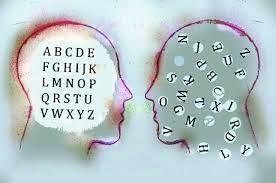In my 25 years of evaluating and treating individuals with Learning Disabilities (LD’s), I have come to the ongoing conclusion that they are quite often misunderstood, even by educational and healthcare professionals. There are several different types of LD’s, which can show up in a variety of ways but, all too often, only the most severe are detected early enough to benefit from early intervention.

Simply put, learning disabilities represent disruptions to typical (“normal”) learning & performance-related processes based on age and grade level. They often are characterized by uneven patterns of brain functioning which may be seen in a student’s academic, behavior or emotional struggles, but can only be confirmed through a comprehensive psychoeducational/ neuropsychological evaluation. Intelligence has little or nothing to do with whether someone has a learning disability, which occur at all intelligence levels: intellectually-gifted individuals can have LD’s and LD’s sometimes go undetected until later teen or college years, for a variety of reasons; on the other hand, LD’s can be diagnosed as early as 1st grade in some cases!
Here are 10 common “warning” signs (not all present in every case):
1. Struggles with reading, spelling, writing or math:
a. monotonic reading (choppy, inconsistent)
b. frequent reading/spelling errors (often inconsistently so)
c. trouble remembering basic math facts (addition, subtraction, multiplication tables)
d. trouble reading (telling) time by analog clock
e. mathematics reasoning & calculations, time/money/fractions concepts
f. poor/sloppy handwriting
g. spells the same word differently on the same paper
2. Poor memory and/or motor skills:
a. seems to forget what was learned yesterday (often inconsistently so)
b. trouble learning/recalling colors, shapes, numbers, letters, coin labels (names/values)
c. sequencing (alphabetical/numerical order, days of the week & months/seasons of the year in order)
d. positional/directional concepts (up/down, left/right, over/under, above/below, forward/backward)
e. trouble learning to tie shoes
f. trouble listening/following directions; can only complete one task at a time
3. Difficulty paying attention or trouble focusing their attention on what is most important
4. Schoolwork takes longer and/or more effort to complete; resists going to school or completing homework
5. More easily confused/overwhelmed (& then eventually “shutting down” or giving up
a. complaints of “too hard,” “I can’t,” “I don’t know” (even if previously demonstrated/capable).
b. more frequent/extensive help and/or reassurances needed
c. avoidance, procrastination, apparently bored/disinterested, argumentative.
d. seems “unmotivated” or “lazy,” variable engagement/efforts
e. under-performance relative to apparent capabilities
6. Seems stressed (more often), anxious/moody, reduced self-confidence, easily frustrated, frequent meltdowns
a. disrupted sleeping patterns (trouble falling/staying asleep, trouble waking up & seems tired a lot)
b. frequent/recurrent headaches and/or stomachaches
7. Seemingly “perfectionistic” qualities (e.g., overly focused, preoccupied, rigid, stubborn)
8. Difficulties with smooth/consistent, effective communication
a. overly simplistic vocabulary/grammar, variably mispronouncing words, confusing and/or misnaming terms/concepts, mislabeling intended communications
b. seems to understand more than they can fluently/reliably (consistently, effectively) express or convey
9. Social difficulties (variably awkward, trouble making or keeping friends) & social concerns (worries, stress)
10. Premature birth or biological family history of Learning Disabilities, ADHD, Autism.
Keep in mind that, just as not every symptom will be observed in all cases, no symptom is specific to any 1 issue or condition (LD, ADHD, anxiety/mood/behavioral disorder, migraine headache disorder, etc.): specific symptoms can occur with multiple conditions, for differing reasons. The key is HOW symptoms co-occur in context (in functional relation with other symptoms) as part of a larger pattern (defining a pattern that is specific to a particular set of issues, or condition), and the extent to which this overall pattern is unusual for age/grade-level; this is what operationally defines the particular meaning of a symptom (as well as the overall set of symptoms) – “context is everything!”
If you are worried…don’t wait!
If your child has been struggling in any of these areas despite your best efforts to help them, it may be time to consult with your school or private clinical psychologist to determine if a testing would beneficial.
Early intervention makes a difference!
I often think of these patterns (learning issues/conditions) as being like an iceberg: what you’re seeing (these more obvious symptoms) may only be the tip of iceberg and finding out what is the underlying cause may be crucial in helping your student reach their highest potential.



